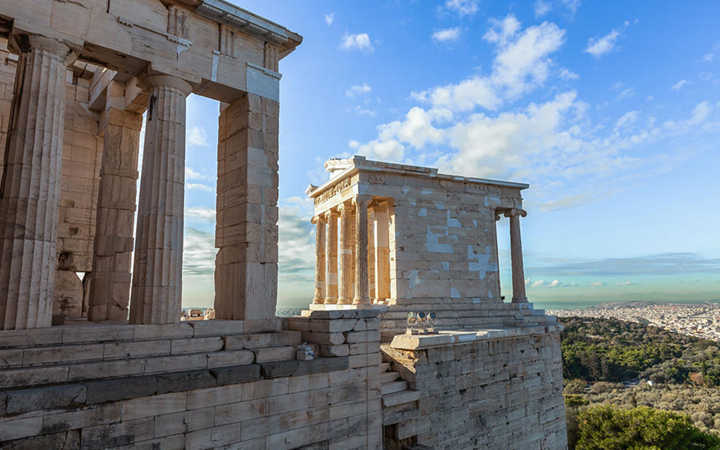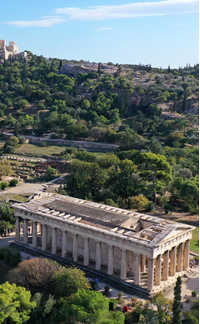Perched gracefully on the southwest edge of the Acropolis, the Temple of Athena Nike is one of Athens’ most elegant ancient structures. Though small in size, this iconic temple holds deep symbolic meaning, blending military triumph with divine protection. Built around 427–424 BCE during the height of Athens' power in the Classical era, it honors Athena as the goddess of victory in war — but in a uniquely peaceful form.
A Temple Without Wings
The word Nike means “victory,” and the epithet Apteros ("wingless") was said to ensure that the goddess could never fly away from Athens. Unlike other depictions of Nike in Greek art, this version of Athena was imagined as permanently present, watching over the city and offering continued protection.
The temple’s elegant Ionic architecture features slender columns and rich friezes, including scenes of battles between Greeks and Persians — a reminder of the Persian Wars and Athens’ growing confidence as a maritime power. One of its most famous sculptures, Nike Adjusting Her Sandal, is a graceful example of Classical beauty and can now be seen in the Acropolis Museum.
Small But Strategic
Despite its compact footprint (only about 8 by 5 meters), the temple stood on a commanding point above the ancient Propylaea (entrance to the Acropolis), offering strategic views of the sea and surrounding plains. It served as both a visual symbol of Athenian pride and a religious sanctuary where offerings were made for success in battle.
Historical Layers
The temple was dismantled during Ottoman rule in the 17th century, likely to use its stones in a defensive wall. It was reconstructed in the 19th century and carefully restored again in the early 2000s using modern preservation methods, with original fragments preserved where possible.
Visitor Tips
- Location: Acropolis Hill, accessible via the main entrance
- Admission: Included in the Acropolis ticket
- Best Time to Visit: Morning or late afternoon for soft light and fewer tourists
- Nearby Highlights: Parthenon, Erechtheion, and Acropolis Museum — all within walking distance
Why It’s Worth Seeing
The Temple of Athena Nike is not just a beautiful ancient structure — it’s a symbol of Athens’ devotion to victory, independence, and continuity. From its strategic position to its refined details, this temple offers a quieter, more contemplative experience on the Acropolis, reminding visitors that even the smallest monuments can carry the weight of a city's identity.


















